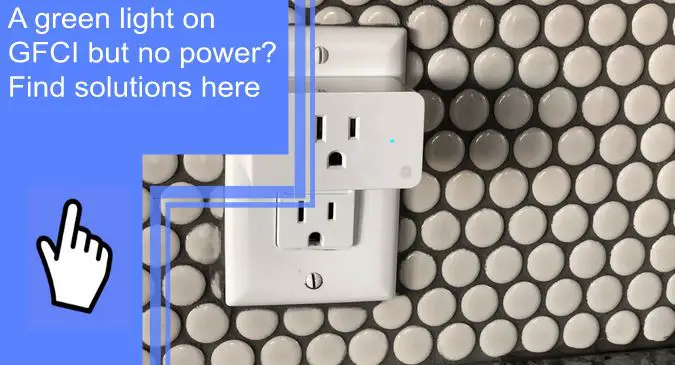What you find on this page:
GFCI outlets are a crucial part of home security and safety. These outlets help to prevent electrical malfunction or issues with appliances that can turn deadly. But what do you do if you have a green light on GFCI but no power?
If you’ve been struggling with this issue, we’re here to help. Read on to learn what can cause this issue and some of the many steps you can take to try to fix it. Be sure to stick around after the guide for a brief section on common questions regarding GFCI outlets!
Why Is My GFCI Outlet Green but With No Power?
There are a few reasons this can happen, but only one is considered the most common. If your outlet is green, but there’s no power, this almost definitely means that it was wired wrong.
Whoever installed the outlet failed to wire the outlet correctly, leading to a power failure to get to your GFCI outlet. However, the GFCI may still show green as it could still have electricity.
Other troubles could cause this issue. It could be that your GFCI tripped and shut off the current, which is stopping electricity from getting through. If this is the case, you can usually reset it.
That said, there are times that it may fail to reset as well! Overall, it’s a complex situation you may want to contact an electrician to complete.
Troubleshooting GFCI Outlet Green but With No Power and What to Do When GFCI Won’t Reset
These issues can be serious, but sometimes you can fix them yourself without much stress. Follow these steps below for a quick and easy way to reset it.
Remember, if you’re concerned for your safety, you should always contact a professional instead. Though these steps are simple, electrical work is difficult and you can easily cause severe damage or injury.
1. Check the Circuit Breakers
The first step is to check the circuit breakers of your home. Every home has a main board that shows the circuit breakers throughout the property.
These are generally labeled and can help you navigate. Make sure you don’t just turn them on and off at random, as you may turn off something important. Some devices, like computers or gaming consoles, are vulnerable to damage if their power is abruptly removed or restored without preparation.
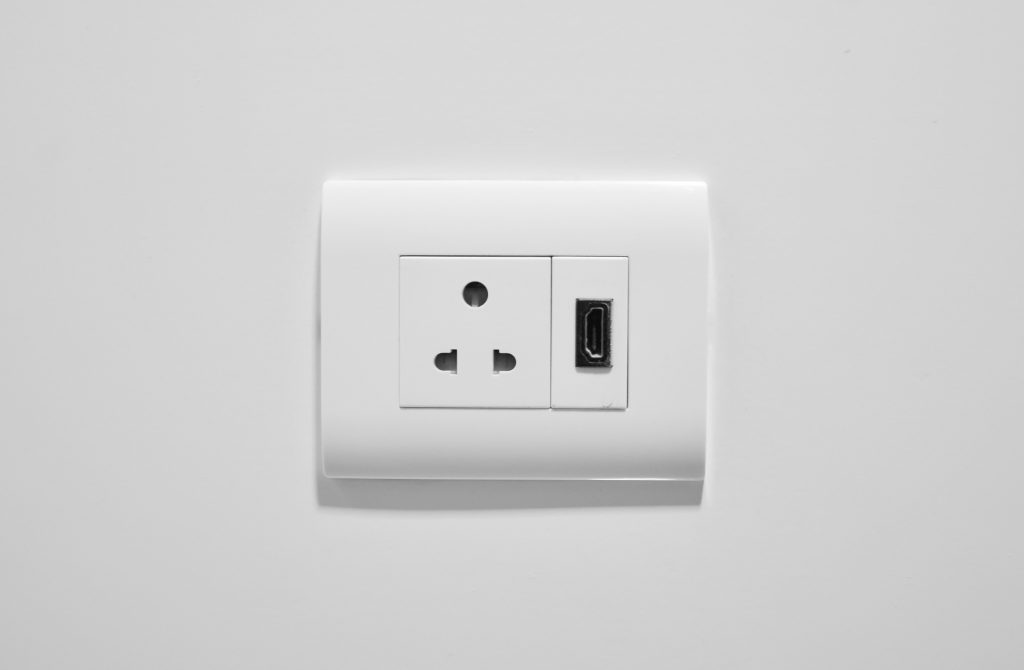
2. Look for Clues in the Circuit Breaker Box
The circuit breaker box may help you see what’s wrong with the GFCI. For example, a tripped breaker may mean that the outlet you’re having trouble with isn’t getting any power.
There may be other forms of damage, or everything could have lost power. Investigate the circuit box to find any obvious signs of loss of power. Contact a professional if you’re uncertain about what you’re looking at! If you rent, you should inform your landlord of the issue to see if they can help or advise.
3. Find the Tripped Breaker
If a breaker is tripped, this is stopping power from getting to whatever section of your home the breaker controls. But how do you know which is tripped?
Thankfully, spotting a single-tripped breaker is easy. All of your breakers should be going in one direction, meaning that they’re on. They’re likely all pushed to the right, for example.
If you have a single breaker that’s turned away, this is likely the one giving you issues.
4. Resetting the Breaker
Once you’ve located the troublesome breaker, make sure that there’s no malfunction. If there are any signs of sparks, exposed wiring, or the smell of flames, do not touch the breaker. Instead, contact emergency services immediately, as this is a severe fire hazard.
If you can safely reset the breaker, push it back to the “on” position. If this was the only issue, your outlet should now function as designed.
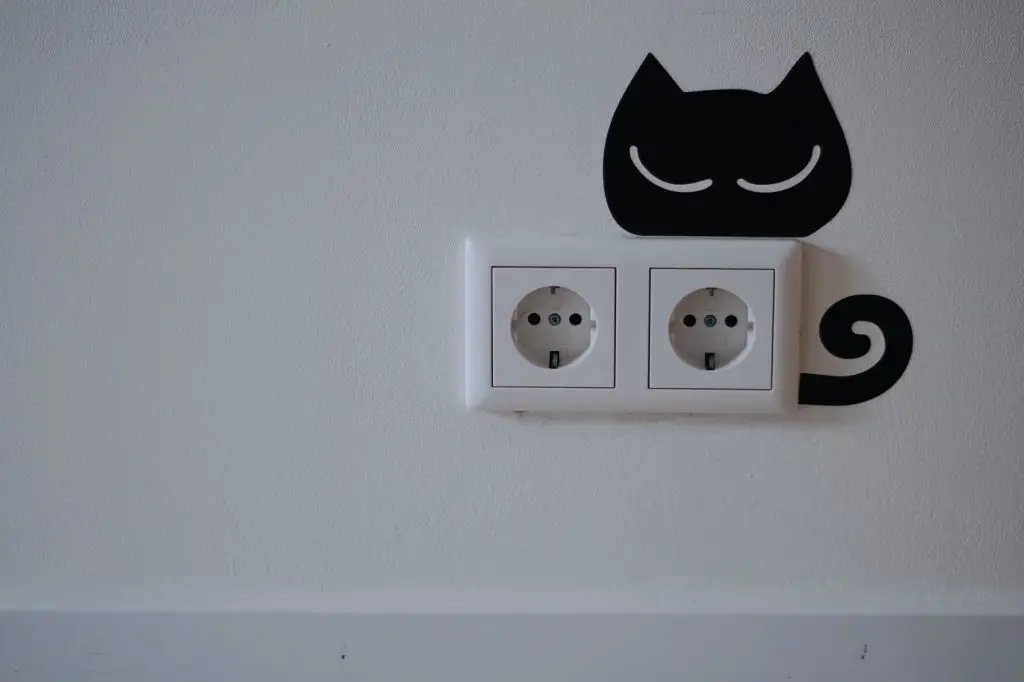
5. Push the Breaker to Reset It
Some breakers aren’t a switch but a button. If this is the case, you can push the breaker down to reset it.
You may also want to do this to reset the breaker’s circuit entirely. This power cycle can help to smooth out any issues or faulty connections.
6. Details of a Blown Fuse
A blown fuse is usually easy to spot, especially if you’re familiar with electronics. A blown fuse will break the circuit and stop your outlet from getting electricity.
Blown fuses are often discolored, possibly scorched, or visibly damaged. If visible, you might be able to see the broken circuit or wiring from where the fuse blew. Should this be the case, you can easily identify which is an issue.
7. Check the GFCIs
If you’re comfortable with wiring, you should check the GFCI outlets. Some GFCI outlets are prone to failure, and your outlet could have refused to turn back on.
If this is the case, repair or replace the GFCI.
8. Identification Label
The identification label can help you see what sort of GFCI you have. This will allow you to search for the model and see possible troubleshooting.
If you’re referring to your circuit breaker, the identification label will help you see what each breaker works towards. In addition, addressing this label will help stop you from turning the power off to somewhere important!
9. Push Reset Button
Your GFCI outlet should have a reset button – this is most commonly at the bottom of the outlet but may be at the center instead.
This reset button often has a decent amount of resistance, making it difficult to press – this stops you from accidentally pressing it.
Press the button with your fingers or something rubber. You should hear an audible click, and the light may go off. This has reset the GFCI.
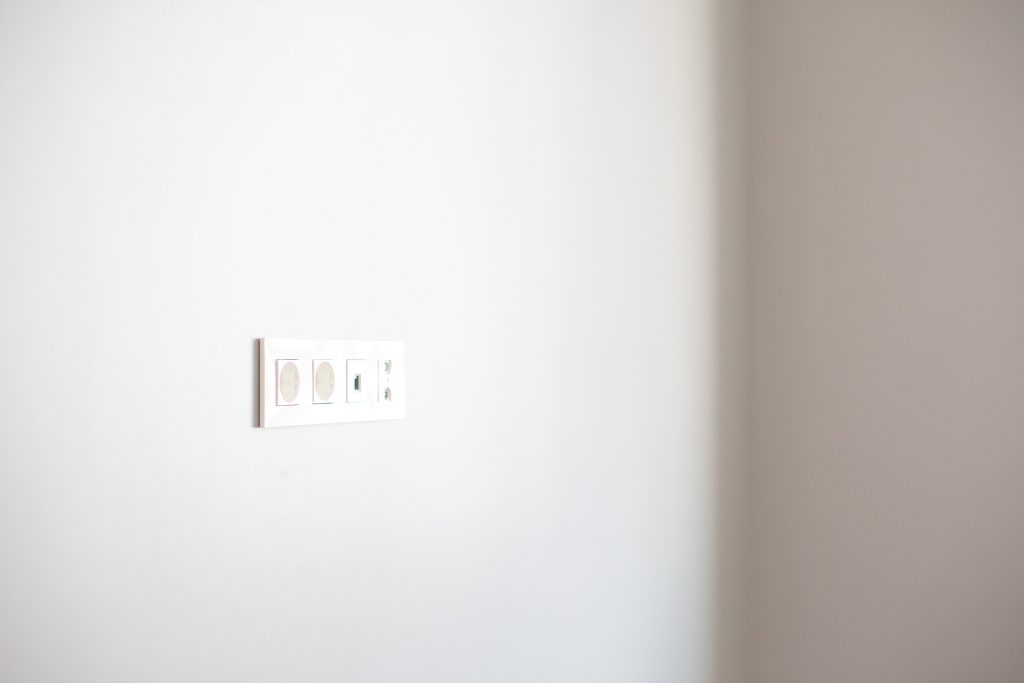
10. Still no Power? Check for Bad Connections
If you’ve checked your breakers and reset the GFCI but are still having no power, you should check your connections.
The outlet may have been wired poorly. This will stop it from giving power to anything plugged into the outlet.
Whatever you’re trying to plug in could be faulty as well! Check all connections before continuing.
11. Turn Off the Main Breaker
As well as checking the connections, you could turn off the main breaker. Be warned that this will turn off power to your entire home! Make sure nothing important is plugged in, and flip the breaker.
In a sense, you can think of this as power cycling your entire home. Wait a few moments, and then flick the breaker back over. This will restore power and, hopefully, reset the connection of the GFCI outlet for you.
12. Check for Loose Wires
In many situations, you might find that the wiring is loose. Should this be the case, you should not work on this yourself. Electrical work is dangerous and complex, and you could cause severe damage or injury.
Should you spot loose wires, call a professional and alert them of the situation.
13. Install a New Outlet
You could also install a new outlet. But, again, this is a complex situation better left to the professionals. It also isn’t the simplest task, so you’ll need to do deeper research on how to replace and rewire an outlet.
14. Loose Wires at the Stab-In Connections
A common place to find loose wires is at the stab-in connections. Should you find these loose wires, avoid plugging anything in.
15. Check Wire Connectors for Loose Wires: Tug Wires at Connectors
Another common place to find loose wires is at the connectors. Tug these wires, if exposed, to see if they’re loosely installed. Should they be loose, you likely have discovered what’s stopping electricity from flowing.
16. Reinstall the Connector
You can reinstall the connector if you feel it could be the issue. Reinstalling the connector doesn’t require complex wiring but is still best left to the professionals. If you choose to do it yourself, make sure you take every safety precaution possible.
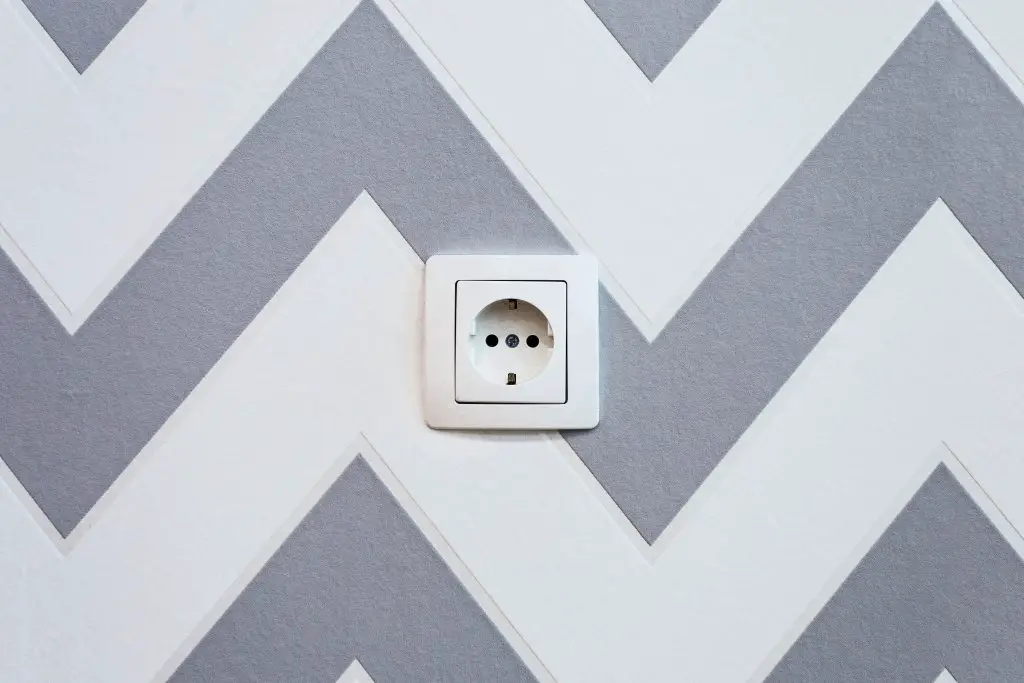
GFCI Green Light Always On
The GFCI green light being on is not a bad thing! Most GFCI outlets will self-test themselves. This means that they’re making sure they’re still functioning properly.
If the green light is on, that means it’s passed this test. Seeing the green light means that your GFCI outlet is working properly!
GFCI Outlet Green Light Flickering
If the GFCI outlet’s green light is flickering, it may be in the middle of a self-test. Should this issue remain, it could mean there’s some level of malfunction in the testing system. In some models, it could mean it’s failed the test and should not be used.
Red and Green Light on GFCI Outlet but No Power
If the lights are on but you’re not getting power, there’s likely an issue with the wiring. First, check your circuits and reset the GFCI outlet. Should this fail, contact a professional and have them diagnose the problem.
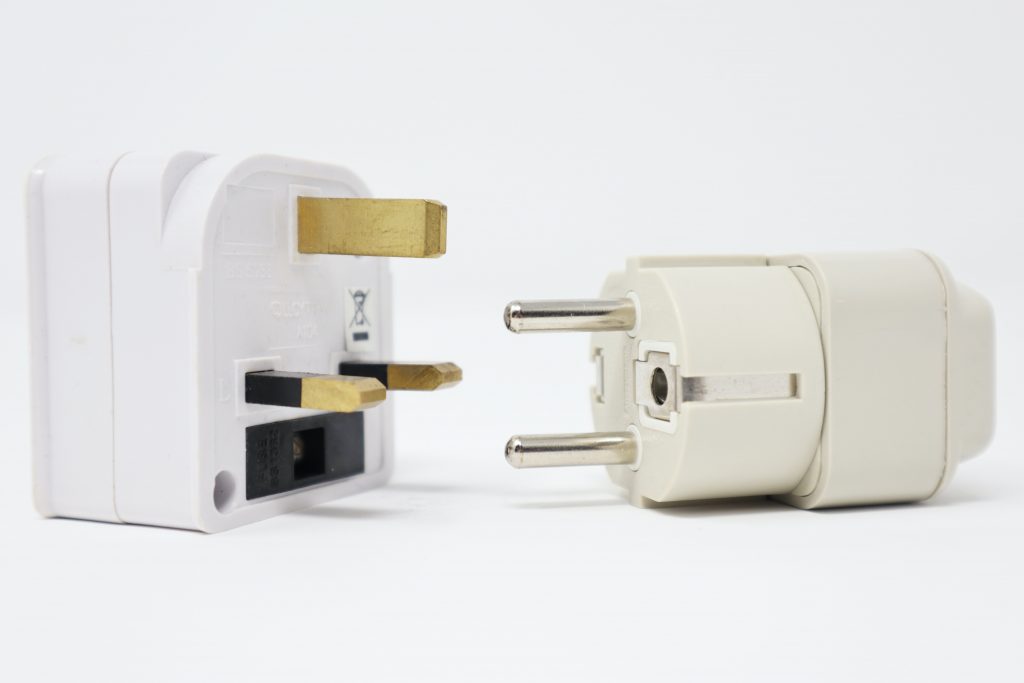
Should the GFCI Light Be Off or On?
The GFCI light should be on! The lights show you the status of the outlet. No lights often mean no power!
The lights and status configurations can mean different things. Consult the user manual of the outlet to see what each light means.
Conclusion
Dealing with a green light on GFCI but no power can be frustrating, but ensure you’re working safely! If there’s no power, reset the outlet and check your circuit breaker. Should the issue continue, contact professionals to help.
Would you like to learn more about home improvement? Then, be sure to follow our site for more, and read on for a brief FAQ section concerning GFCI outlets!
Frequently Asked Questions
Your GFCI outlet is likely not getting power due to faulty wiring. Check your circuit breaker to ensure that nothing has been tripped as well.
If the outlet won’t reset, you may have an issue with the reset button! First, make sure that the power to the outlet is turned off, and then attempt to pry the button free. Should it remain stuck, remove the outlet completely.
There could be foreign debris stopping the reset button from being pressed. However, it may be “stuck” because the GFCI is tripped and won’t reset due to faults or hazards.
It can be difficult to diagnose a GFCI outlet as faulty. However, should you suspect yours is bad, plug something into it and see if power comes through.
If the lights remain flickering, this could also mean a fault. Above all, you should never use an outlet that you suspect of being faulty. This can cause a serious fire hazard as well as a risk of severe electrocution.
If a GFCI breaker has tripped and is refusing to reset, it may have something broken inside. Unfortunately, this can usually only be diagnosed by professional electricians, so you’ll need to recruit some help.
If there’s no power to the outlet, but you can guarantee that the outlet should be working, the GFCI breaker is likely faulty or bad. Replace the GFCI or seek professional help to have the area rewired.
No. A GFCI outlet will need electricity to function properly. The component requires electricity to reach its electrical box for it to have any functionality at all, so having no power to the circuit will prevent you from resetting it.
Instead, you should ensure that the outlet is getting electricity when resetting it. Because of this, you’ll always be working with a live outlet when troubleshooting issues with a GFCI. As always, seek professional help should this be an issue.
That said, resetting a GFCI is simple and shouldn’t require professional help. First, use your fingers or something rubber to press the button down. Should it refuse to be pressed down, it’s likely flipped or broken.

